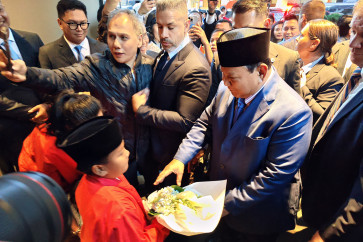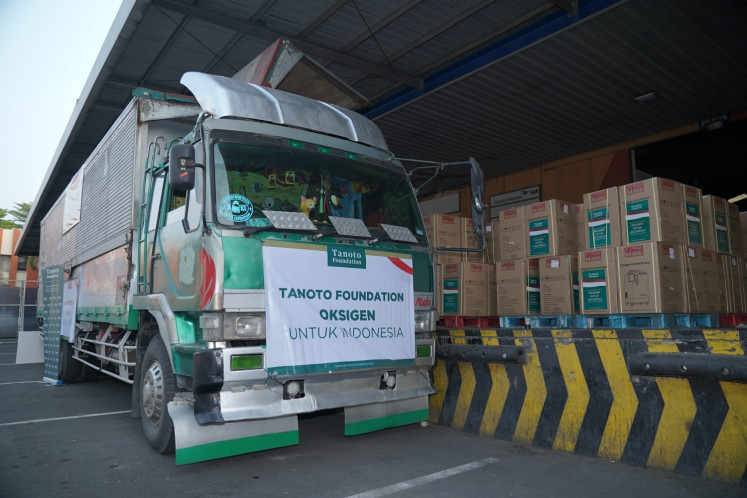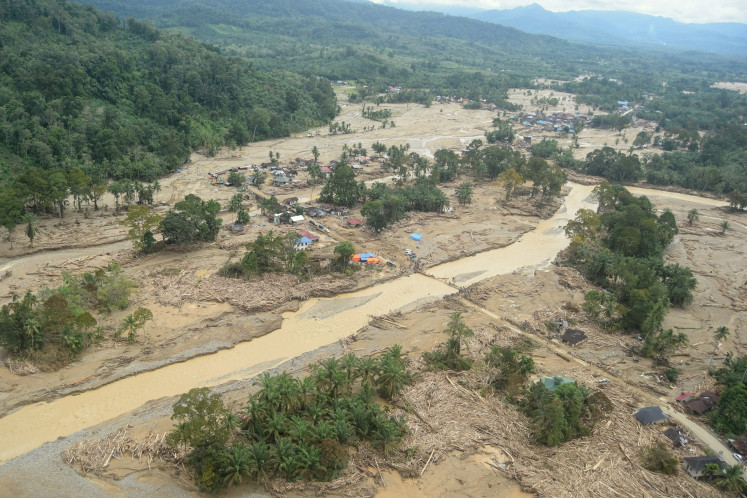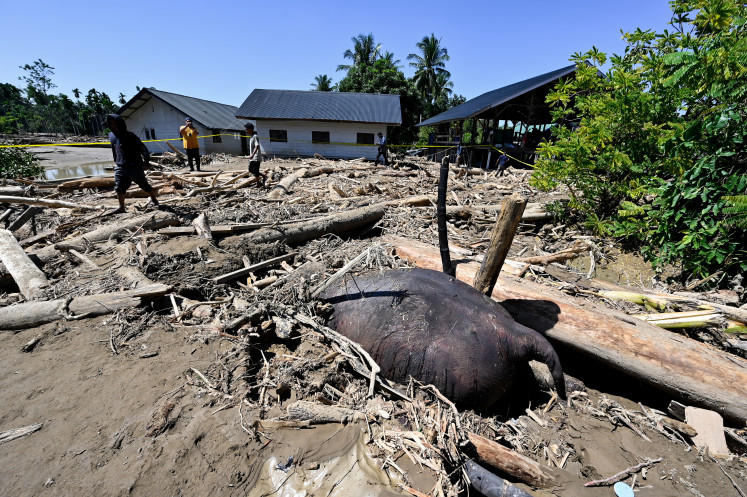Popular Reads
Top Results
Can't find what you're looking for?
View all search resultsPopular Reads
Top Results
Can't find what you're looking for?
View all search resultsHow one Indonesian city went beyond apps to solve problems
Living in a smart city means intelligent integration of all facets of urban life. After a shaky start, Indonesia is testing a new system to get it right.
Change text size
Gift Premium Articles
to Anyone
Smart cities are a clever idea but the trick is in the execution.
Take Indonesia, for example. Finance Minister Sri Mulyani complained this year how there are too many government apps – 24,000 – and they were a waste of money.
Not only were they a drain on state finances but each government department had developed its own and the myriad apps did not talk to each other. Which meant they were not much use to the millions of people trying to use them to improve their lives.
The rush to develop apps kicked off in 2014 when Indonesia introduced its 100 smart cities project.
The smart cities and smart solutions based on technology project has become a solution to urban problems, but they still pose a complex challenge. Many of these projects fail because:
- The unsuitability of the smart city concept for urban conditions.
- The scope of implementation is too broad (do not assume a limited scope).
- The impacts are not directly felt by the community.
- There is too much focus on technology development, which ignores governance and changing the mindset of human resources.
- A lack of evaluation of the implementation carried out in the metropolitan area.
- It does not start from the core value but focuses on the added value on the implementation;.
- It does not manage sustainability.
To answer those challenges, there needs to be a comprehensive approach that involves most people. Living Lab is one of these solutions.
Using data, Living Lab tries to solve problems through the deployment of intelligent solutions in a specific area in a real environment. It involves stakeholders to measure their effectiveness and provide feedback on the sustainability of the improvement, from which they benefit.
The programme is being implemented in the the small but densely populated Dago, Dipatiukur, and Ganesha (DDG) areas of Bandung, Indonesia. It integrates multiple problems into one platform to solve problems and evaluate control.
DDG is a hive of activity. It’s home to business, education, small-medium enterprises and healthcare. The main problems involve basic services around energy and waste management. Waste generated by the numerous small businesses is a particular issue, along with water supply. Parking is another problem, with streets often brought to a standstill by heavy traffic.
There are six initiatives integrated into one platform to try to solve these problems.
- Living Lab platform
The Living Lab web platform concentrates all the problems in one area, making it easier to monitor solutions.
How can the city maximise the potential of small-to-medium enterprises? Many have issues with logistics, advertising and payment. Digitisation of these businesses will make it easier to collect data then map them in a way that is easily accessible to all stakeholders. Living Lab can act as a news portal for activities around the area.
- Smart mobility system
One of the main problems in these areas is congestion. This system monitors traffic flow, illegal parking and violations.
Waste management is a big issue. The system will monitor the success of the 3Rs project (reuse, reduce and recycle) and will use the Internet of Things for monitoring waste management such as the level of waste at temporary collection points or special waste containers.
- Media analysis
Monitoring news about the area can help address any issues such as security related to vandalism and violence, illegal street vendors and traffic congestion.
- User engagement
Keeping all stakeholders up to date is crucial to a smart city’s success. The four main stakeholders are: Government (implementation and regulation); industry (implementation, finance and alternative solutions); academia (research and implementation, collaboration) and citizens (solutions and driving change).
Living Lab has been a success in the DDG area and is set to expand into another area (Coblong) in an effort to reduce the 24,000 less productive applications to ensure public money is no longer wasted.
---
Hendra Sandhi Firmansyah is a researcher in Smart City and Community innovation Center ITB and a lecturer in STMIK Jabar . His research interests are o Smart City, Informations system, ICT
Suhono Harso Supangkat is a professor in Institut Teknologi Bandung. He is the chair of Smart City and Community Center ITB. His research interests are smart cities concepts, smart city governance, and Internet of Things.
Indonesia’s Ministry of Education, Research and Technology funded this article via Kedai Reka Programme
Originally published under Creative Commons by 360info™.











